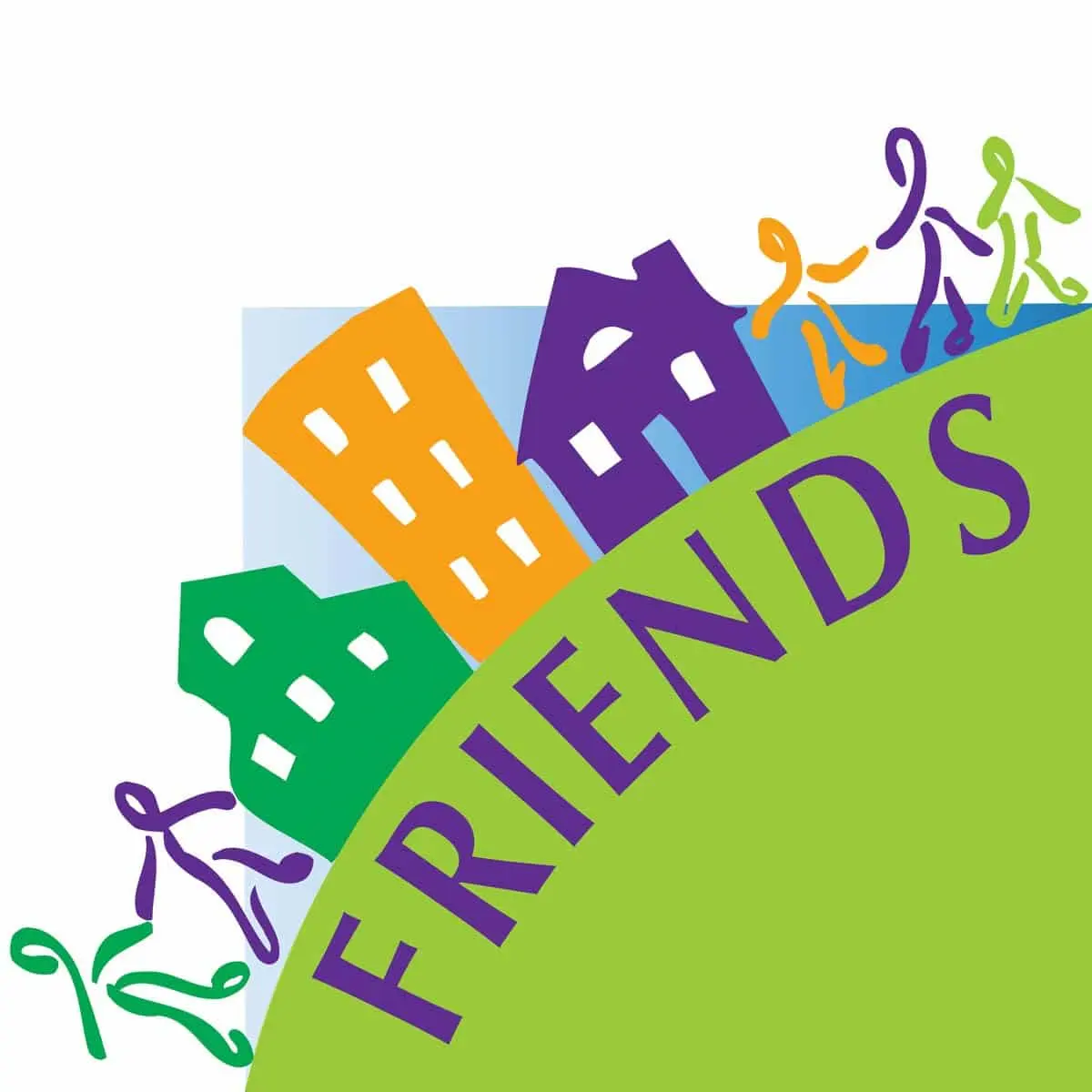Working with American Indian & Alaska Native Communities
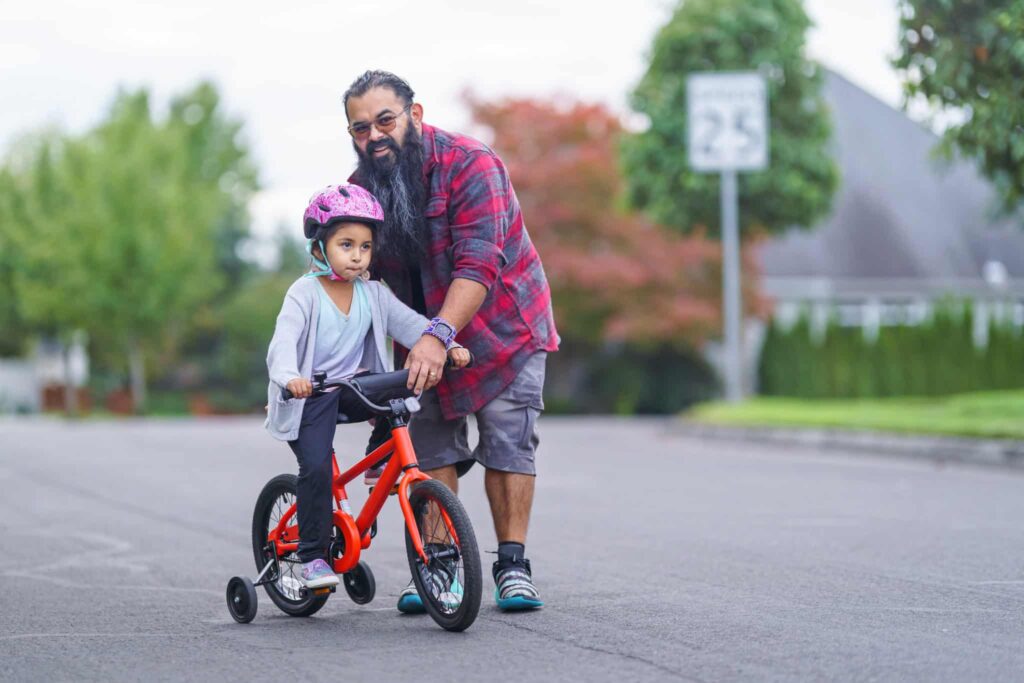
Introduction
The child abuse prevention community has a responsibility to advance racial equity and support underserved communities in their Community-Based Child Abuse Prevention (CBCAP) work.
“Recent research demonstrates that American Indian and Alaskan Native children are more likely to be removed from the home, stay out-of-home care longer, and experience more placement settings compared to white and non-native children.” 1
The following material was compiled to provide state and local leaders with information to promote understanding in the field of family strengthening to proactively collaborate with tribal communities to promote health and well-being through culturally responsive prevention strategies.
“When we show our respect for other living things, they respond with respect for us.” – Arapaho
1Edwards, F., Rocha Beardall, T., and Curtis, H. (2021). “American Indian and Alaska Native Overexposure to Foster Care and Family Surveillance in the US: A Quantitative Overview of Contemporary System Contact.” SocArXiv Papers April 1. Accessed July 17, 2023. https://doi.org/10.31235/osf.io/fcz5p
PREVENTION
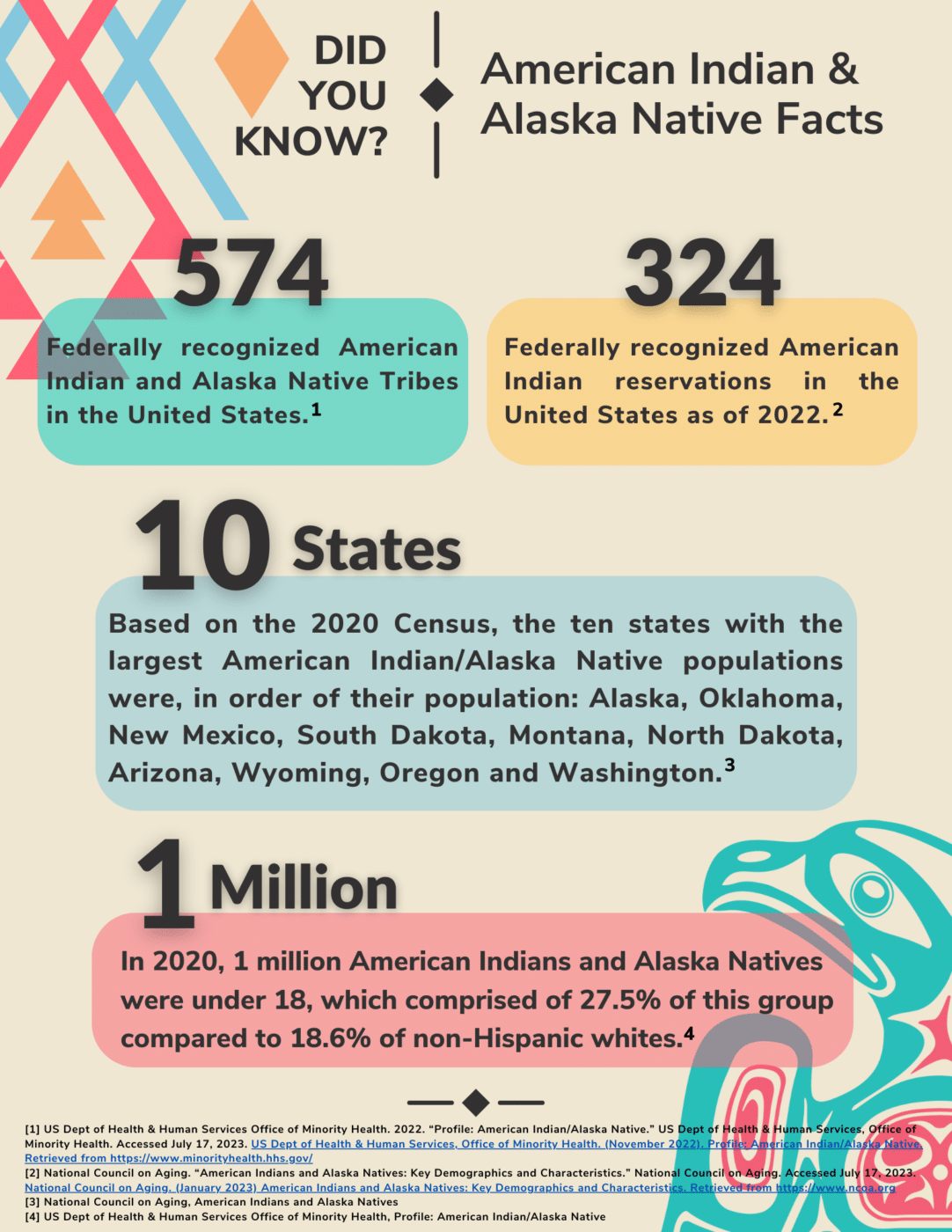
Terminology: A Matter of Respect
Native Nations, Native Americans, Indigenous Americans, American Indians, Alaskan Natives, Tribal Communities: When addressing American Indians and Alaskan Natives it is best to inquire about the terminology that is preferred by their Native nation or tribal community. The information throughout this content will reflect varying communities use of one or more identification terminology.
About Tribal Sovereignty:
The U.S. Constitution, congressional acts, and case law re-affirm the unique relationship between tribes and the federal government, known as the federal trust responsibility. Each tribe has its own governing body, laws and ordinances, culture, language, and traditions that ensure the Tribal Nations’ ability to govern, protect and enhance the health, safety, and welfare of tribal citizens within tribal territory. The enactment of the Indian Self-Determination and Education Assistance Act in 1975, facilitated Native nations to develop and operate their own education, health, housing, and social service programs.
To download a copy of this infographic, click here.
“I believe that honoring our traditional Kickapoo teachings and things passed down by our ancestors promotes healing and allows us to celebrate who we are. Some of these ways may be practiced through song, dance, and art and this allows children to practice tradition proudly. This also allows adults and parents to show leadership within our community and healthy adult relationships.”
-Johanna Thomas, Vice Chair, Kickapoo Tribe in Kansas
It is important to understand the adverse and long-term impact of historical and intergenerational trauma due to the forced removal of tribes from their ancestral homelands and the removal of Native children from their families. Between 1819-1969 hundreds of thousands of native children were sent away to government-funded boarding schools that prohibited the practice of native languages, and cultural and religious practices resulting in the loss of cultural identity for many tribes and increased marginalization. “The forced separation and assimilation of children from their families through boarding schools has caused and continues to cause severe economic, social, and psychological harm to indigenous communities.”1
The historical loss of land, place of origin, language, ancestors, and cultural knowledge due to colonization continues to cause stress among elders and youth.2 This trauma persists not only in individuals but in family systems and at the community level as well. The negative impact causes higher rates of mental and physical illness, disparities in mortality rates, disparities in rates of alcohol and substance abuse, overrepresentation in the child welfare system, and high rates of community violence and domestic violence.
At the family level, we know that:
- American Indian/American Native children are four times more likely to be removed by state child welfare systems than non-Native children even when their non-Native families have similar presenting problems.
- American Indian/American Native children are in state foster care at a rate 14 times higher than their rate in the general population.
- 56% of adopted American Indian/American Native children are adopted outside their families and communities.3
This data speaks to the urgency required by family-strengthening partners to acknowledge the trauma imposed on the American Indian and Alaskan Native communities. To continue the journey of healing, it is imperative for the prevention community to work collaboratively with Indigenous and Native leaders to promote culturally appropriate strategies that support family and community well-being.
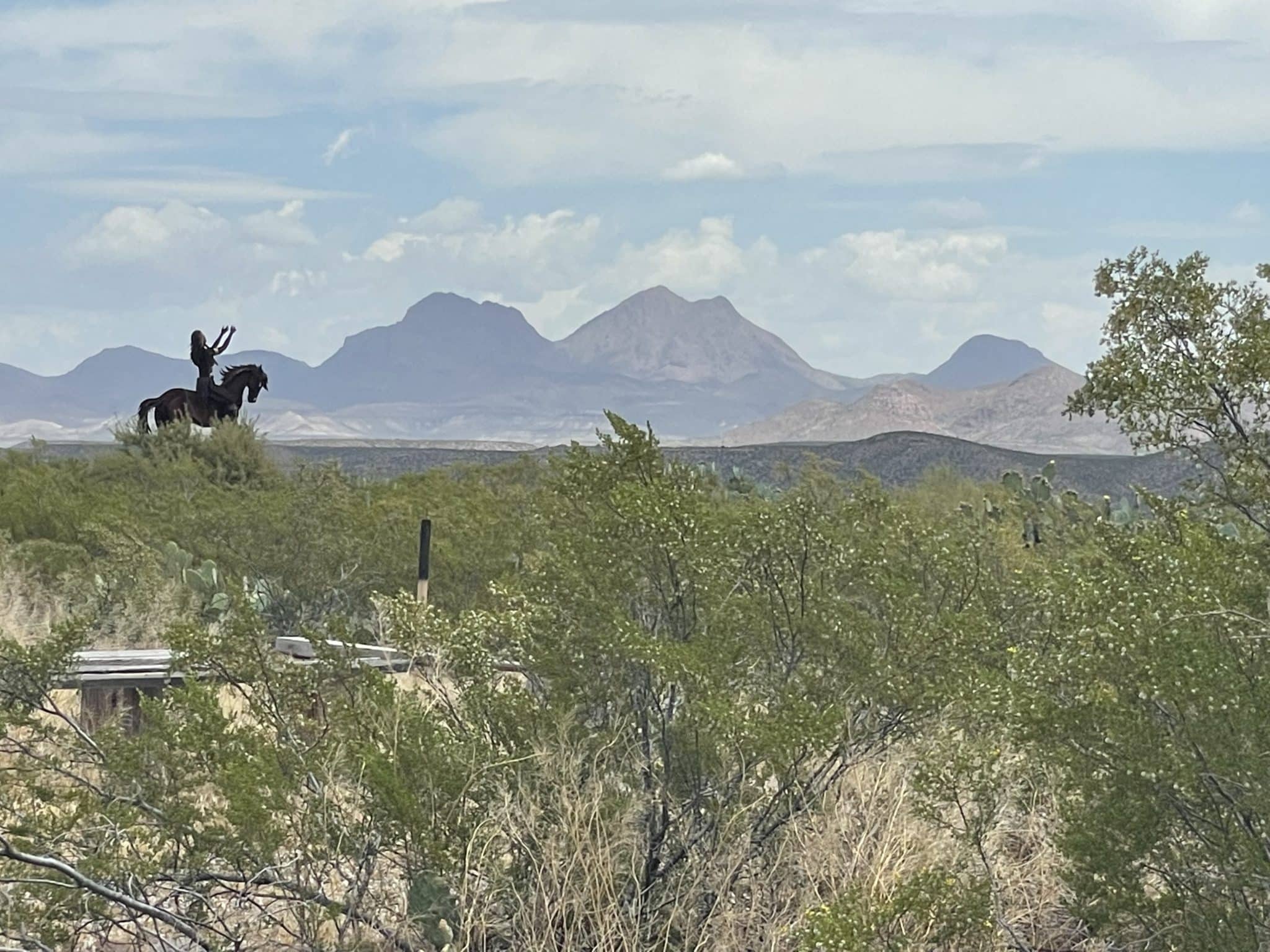
How might historical trauma impact services to the AI/AN populations?
- Mistrust of systems, organizations, and their representatives due to a legacy of negative experiences over generations
- Stigma with utilizing services due to differences in beliefs and world views on wellness and support services.
- Multiple support services may be identified to address family challenges increased by the effects of intergenerational trauma.
- Limited services and resources in tribal communities due to missed opportunities for collaborations and funding because of lack of trust and harm caused by racial injustice.
It is important to acknowledge that although healing may be a long and difficult journey in the face of trauma, Native nations are taking purposeful action toward improving their overall health and well-being. Dr. Maegan Rides At The Door shared thoughts on how to help with the impacts of historical trauma:
“It is important to acknowledge that tribes are in an era of self-determination. They are becoming action-oriented to drive decision-making in all areas of healing, and well-being.” 4
As we move forward, we must acknowledge the pain inflicted and as a potential partner, provide opportunities for American Indian/Alaskan Native people to own the development of their path towards healing.
1 Edwards, Beardall, and Curtis, American Indian and Alaska Native Overexposure to Foster Care
2 Whitbeck LB, Adams GW, Hoyt DR, Chen X. “Conceptualizing and Measuring Historical Trauma Among American Indian People.” American Journal of Community Psychology 2004 Jun;33(3-4):119-30. DOI: 10.1023/b: ajcp.0000027000.77357.31. PMID: 15212173.
3 National Indian Child Welfare Association. “Setting the Record Straight: The Indian Child Welfare Act Fact Sheet.” National Indian Child Welfare Association. Accessed July 17, 2023. https://www.nicwa.org/wp-content/uploads/2017/04/Setting-the-Record-Straight-ICWA-Fact-Sheet.pdf
4 Youth Homes. “Essential Understanding of Historical Trauma for American Indian Families and Communities. Vimeo. Accessed July 17, 2023. https://vimeo.com/231752511
“It is important to acknowledge the history shared with a tribal partner and how that history has resulted in present-day dynamics.” – Thorne and S. Garcia Tribal Law and Policy Institute, February 2019
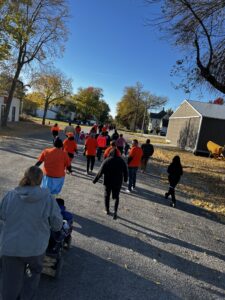
The Kickapoo Tribe of Kansas hosts a Healing Walk to support community members.
The child abuse prevention community has a responsibility to collaborate with Native nations, tribes, and tribal communities. To do that, several steps need to be taken:
- Acknowledge that the unique aspects of tribal sovereignty can impact how you establish and build a relationship with a tribal government.
- These relationships need to be nurtured, and relationships with tribal communities require reflection and openness to understand each other’s differences.
- Commit to a better understanding of tribal leadership practices and tribal structures is important in building a strong relationship.
- Maintain open lines of communication, work with tribal government processes, and be open to other activities that foster collaboration.
At times, due to the unique process of tribal governments, relationship building may be gradual, but committing to it can improve communication, and the ability of CBCAP State Lead Agencies must commit themselves to work more cooperatively with tribal nations.
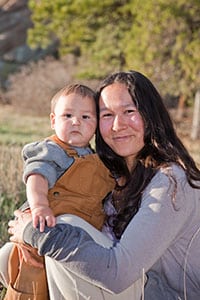
Native Americans live in every state in the U.S., in small towns, villages, islands, big cities, and on reservations or other forms of tribal land. More than half of Native Americans do not live on a reservation. There are many state and local communities that are working with American Indian/Alaskan Natives in various program services from mental health, child welfare, early childhood, education, healthcare, legal and youth services. Many families reach out to their tribal services for support and are eligible for services that aim at supporting the families of federally recognized tribes.
There are states that have some history of collaboration with their state’s Native nations and there are those that are exploring various strategies to engage tribal communities in prevention and family strengthening initiatives. Let’s look at two different state stories that have a focus on working with tribal communities in enhancing child well-being and prevention of child maltreatment.
- Wisconsin
- South Dakota
Addressing primary prevention in tribal communities through a public health approach and strength-based perspective
Setting the Stage for Engagement
In Wisconsin, the Prevention Board is the lead funding source for child abuse and neglect prevention since written into legislation in 1983. The Prevention Board’s Community Investment Plan is based on a public health approach to child maltreatment and building a continuum of community-based primary prevention services.
In FY 2018, the Prevention Board launched a statewide professional development series on the Protective Factors Framework. “Bringing the Protective Factors Framework to Life in Your Work” educates professionals who work directly with children and families on enhancing their efforts to partner with parents and see families from a more positive, strengths-based perspective.
In the FY 2019, the Prevention Board conducted informant interviews with agencies implementing evidence-based parent education to assess unmet needs. The Prevention Board partnered with the Parent Education Initiative to fund a comprehensive survey, which allowed them to gather information about available parent education programming across Wisconsin and assess agency readiness to implement evidence-based parent education programs. The survey results found that almost half of the respondents were not implementing evidence-informed or evidence-based parent education programs, but most indicated they were interested in implementing evidence-based and/or evidence-informed parent education programming.
Inviting Community Voices
Tribal Nations were among those interested in implementing evidence-based/or evidence-informed parent education programming. The Menominee Indian Tribe of Wisconsin is one current Prevention Board partner that has received professional development support in the Protective Factors Framework training. This support includes building the capacity of certified trainers and parents from the Menominee community who partner as co-presenters of the framework training. In addition, the Prevention Board’s education coordinator worked with Menominee tribal members to ensure the curriculum includes activities and examples inclusive of their language, experiences, and people.
American Rescue Plan Act (ARPA): Funding Tribal Primary Prevention
Listening sessions and community input gathered throughout FY21 directly impacted the Prevention Board’s decisions on effectively distributing ARPA funds in Wisconsin. The Prevention Board proposed an allocation of funds to provide vital support to families. Family support examples could include community-based parent support programs, early childhood programs, family resource centers, and coordination with other resources.
The Prevention Board held a listening session with two Tribal Nations to increase their understanding of emergent needs in addressing primary prevention in their respective communities. As a result of its public health approach and concerted efforts to build a continuum of community-based primary prevention services, the State of Wisconsin has provided tribal primary prevention grants with ARPA funding. ARPA Funds will help Tribal Nations expand primary prevention programs or implement new programs. Their primary prevention programs are connected to at least one of the Strengthening Families Protective Factors® or one of the strategies in the Center for Disease Control and Prevention’s Preventing Child Abuse and Neglect Technical Package.
Community-Based Child Abuse Prevention (CBCAP) Lead Ash Schlichenmayer-Okroi speaks to enhancing choice in culturally relevant prevention work in South Dakota - through the enhancement of Positive Indian Parenting programs.
The South Dakota Department of Social Services’ mission is strengthening families to foster health, well-being, and independence. The state’s Division of Child Protection Services works to establish and implement a continuum of community-based child abuse prevention programs.
South Dakota has utilized American Rescue Plan Act (ARPA) funding to support the reintroduction of Positive Indian Parenting to South Dakota. Positive Indian Parenting is an eight-week course focused on traditional and cultural parenting practices and values. The goals for Positive Indian Parenting are: (1) To help Indian parents explore the values and attitudes expressed in traditional Indian child-rearing practices; (2) To help parents develop positive and satisfying attitudes, values, and skills that are rooted in the Indian cultural heritage. Positive Indian Parenting trainers learn to partner with families and teach parenting skills that build off traditions, as well as apply knowledge to the challenges and skill opportunities in modern parenting.
In the following interview, Ash Schlichenmayer-Okroi, CBCAP state lead, tells about South Dakota’s ongoing work in strengthening families, specifically addressing tribal nation communities. She also shares that although the group is focusing on enhancing Positive Indian Parenting programs, they also offer Common Sense parenting at nine Native American reservations. Let’s dive a bit deeper into South Dakota’s preventative approach to working with tribal communities.
“Choice is important, especially when seeking culturally specific parenting education programs.” – Ash Schlichenmayer-Okroi
Early planning efforts lead to addressing culturally diverse needs in prevention work.
How long have you been working as the South Dakota CBCAP lead and do you have helpful information about your experience thus far when it comes to your interest in racial equity, working with tribes, strengthening families work, etc? The first two decades of my career I’ve worked with people with intellectual and developmental disabilities. For a number of years, I was the lead investigator for abuse, neglect and mistreatment allegations. The focus of prevention is so important to me stemming from those experiences. Choice is important, especially when seeking culturally specific parenting education programs.
What led to your decision to focus on addressing tribal nation families? South Dakota has identified, through early efforts of working on their state’s Prevention Plan sparked by the Family First Prevention Services Act (FFPSA), that their prevention efforts for parent education should not be one size fits all.
Additionally, with available ARPA funding, it was the ideal time to reinvigorate the division’s strategic programmatic focus. In South Dakota, there are nine Native American reservations and in the spirit of reaching all of the citizens of South Dakota, we chose to enhance the Positive Indian Parenting program which was already being offered by one agency but with minimal utilization with our tribal partners.
Describe any previous relationships that may exist with tribal communities or tribal serving organizations and SDDS. South Dakota has many formal and informal ways to connect with tribes. South Dakota Department of Social Services Division of Child Protection Services (CPS) works closely with tribal partners throughout the state on an ongoing basis. CPS delivers child welfare services on five reservations whereas others operate their own child welfare services through state tribal agreements.
Acknowledging that historical distrust may impact collaboration. What recommendations do you have for your fellow state leads regarding nurturing relationships with tribal nations? Recommendations would be to work with the state tribal office, leveraging relationships that are built through the work we all do for children. Regarding the historical impacts, these pieces are brought up occasionally during meetings and conversations and our approach has been and will continue to be to work collaboratively. The involved of engaged tribal representatives through all opportunities such as reviewing and selecting programs or vendors, planning committees, boards, networking, or advocacy groups, etc. is key to demonstrating the appreciation of perspectives.
Identification of Program & Planning Efforts:
Describe your planning steps taken to build capacity to serve tribal communities. South Dakota has begun its work to develop a Prevention Plan. Plan development will rely on the support of a qualified consultant and be focused on engagement with our stakeholder community, particularly through information gathering sessions.
In addition, two training courses for new instructors for Positive Indian Parenting were held in 2022. Training is based on curriculum and materials developed from the National Indian Child Welfare Association (NICWA). These resulted in the formation of fifty trainers located across the state. These trainers came from a broad range of professionals including educators, clinicians, social workers, child welfare (state and tribal led), and community non-profit organizations. There were representatives from the nine Native American tribal lands, urban areas, and rural/frontier locations.
Tell us more about your process in terms of providing this training opportunity to your state’s community organizations. Did you have to get permission from the National Indian Child Welfare Association (NICWA) the creator of the Positive Indian Parenting curriculum as part of your planning process? Yes, we connected with NICWA for a variety of purposes. We connected with them on the allowability and practicality of having someone that had been previously certified and licensed in the training go out and share that information in a train-the-trainer opportunity. So, we were able to leverage funds to provide the training to folks in the community from a variety of organizations at no cost. It’s an investment into each of these trainers as we invested in the books and the licenses for everyone, and they invest their time, expertise, culture, and perspectives.
“The importance of relatable parenting education which incorporates culture and traditions is key.” – Ash Schlichenmayer-Okroi
Implementation:
Was there anything specific about Positive Indian Parenting that compelled you to enhance your work with that framework? Positive Indian Parenting was the optimal choice for South Dakota as the capacity for a trainer was already in place. Positive Indian Parenting is highly regarded and is an excellent fit for the rich Native American diversity of South Dakota. It provides a framework for instruction and reserves elements of the curriculum for instructors to customize the programming focused on their own experiences and appreciation for unique cultural traditions and tales used to pass along those traditions.
Was there anything in the Positive Indian Parenting framework that supported your work in building protective factors? Throughout the facilitation of Positive Indian Parenting storytelling and cultural tales is important. Positive Indian Parenting focuses on recognizing traditional Native American parenting aspects and in helping adapt elements to the challenges of modern parenting without losing the importance of cultural aspects. The Protective Factors are stressed throughout the curriculum and covered deeply during the instruction of the trainers.
An example of this is the weaving of the Protective Factor of Nurturing and attachment with traditional and current parenting practices in the Native American culture. The lesson of the cradle board demonstrates parents traditionally carried their infants on their backs or chests in cradle boards and when activities requiring physical demands such as gathering took place, the infant in the cradle board would be nearby, often set against a tree or even hung from a low branch so the child was nearby the activities and could see loved ones. Currently it’s standard practice in the nation for parents to set their infants in playpens or cribs where they look up at the ceiling or a mobile when a parent needs to do physical work to have that closer involvement.
One Positive Indian Parenting site in South Dakota at the Enemy Swim Day School leads the lesson of the cradle board as aligned with the Protective Factor of Nurturing and Attachment and parents along with children build cradle boards as a craft opportunity and social time together.
Evaluation:
What plans do you have for the evaluation of the implementation of the Positive Indian Parenting program? Methods for Common Sense Parenting have been adapted to align with the Positive Indian Parenting model. We collect demographic data and will ask about the effectiveness of the program and any suggestions they may have for making changes. We gather this information from the attendees before they get their certificates. We make sure we get the information back versus sending a survey home. We also include a peer review piece that is similar to what we incorporate for our parenting education evaluation. A coordinator or I will visit the different sites, at least every other year, sometimes annually, and verbally gather information about the effectiveness of the programs. This includes inviting past parents or caregivers who have been through the training, and we invite them to offer feedback as well as gathering this information from community organization representatives like domestic violence shelters, child welfare, and other agencies. Their input is valuable in informing future planning activities, identifying areas where additional training can be provided, and in sharing further collaborative resources.
We look forward to hearing more about your implementation and the results of your enhancement through the use of the Positive Indian Parenting framework. What can you tell us about what’s ahead? The importance of relatable parenting education which incorporates culture and traditions is key. On the horizon, through the Family First Prevention Services Act prevention plan development, a robust stakeholder information gathering series will take place. A gathering of all perspectives within the state, rural, tribal lands, urban, frontier, metro will be used to inform the plan for preventive efforts which we are developing. This plan, once developed and implemented, will guide our future efforts at CPS.
American Rescue Plan funding will support the enhancements for training and CBCAP funds will be utilized for the contracts as they develop to have organizations and individuals implement Positive Indian Parenting on an ongoing basis to families. We envision Positive Indian Parenting to enrich families for generations to come and attribute early successes to the great team of talented instructors representing a broad range of tribes, regions, and service areas.
“Let us put our minds together and see what life we can make for our children.” – Sitting Bull
For many state and local entities, the goal to engage in building proactive efforts with communities they are not familiar with can be a daunting task. To begin, it is important to learn and have respect for tribal sovereignty. It is important to acknowledge the uniqueness of every tribe and that these are suggestions that may work for one but not for another, etc. It is best to follow the lead of the Tribe to determine a plan moving forward. Additionally, it is imperative that non-native representatives of government and other non-native institutions acknowledge and learn about historical and intergenerational trauma. Approach your relationships with tribes with humility, an openness to learn, and the opportunity to manage the dynamics of differences in cultural perspectives and world views. Below are a few overarching principles for engaging with tribal nations:
- Be prepared to listen. Our ability to listen to understand is integral to building trusting relationships. Within some tribal communities, it is taught that people were given two eyes and two ears, and only one mouth for a reason. It is said that one should watch and listen twice as much as one speaks. Listen and learn what is important to tribal nations.
- Take steps to learn about tribal nations in your communities. Begin and continue to educate yourself about the history, traditions, and practices of the tribal nation you are attempting to engage. Educate yourself about the diversity present within each Native nation and tribal community. There is a diverse array of religions, spiritual beliefs, and political and cultural dynamics within tribes.
- Identify both elected and traditional leaders. As with any professional collaboration, it is important to identify the informal and formal community leaders and stakeholders. Approach with respect and acknowledgment of key decision makers. If appropriate, it may be helpful to seek an introduction to tribal leadership by another community leader or facilitator with an established positive relationship with the tribal nation.
- Clarify, check for understanding, be curious, avoid assumptions and being judgmental. Make it a goal to ensure there is a shared understanding of vocabulary, goals, expectations, and ways of working. It is important to start with inquiries about definitions for family and community and worldviews on health and spirituality. Equally important is to consider designing a set of shared working agreements centered on working in a respectful and equitable manner with ongoing dialogue.
Resilience: “The ability of American Indians to maintain optimism during adversity is related to spirituality, compassion, empathy, humor, friendships and familial and community strengths.” (Goodluck, 2002) – National Native Children’s Trauma Center

Kickapoo language board books promote love of reading and language.
Many tribal communities have committed to integrating, reinforcing, or introducing cultural practices into their family-strengthening programming. The importance of recognizing cultural wisdom and practices as a protective factor has been seen across many fields.
“Culturally based practices are culturally rooted customs, behaviors, values, and beliefs passed down through generations that function as ‘informal systems of support.’ These culturally based practices form part of a socially dynamic framework of assistance provided by and to individuals by their families, friends, and communities.” 1
With planning and coordination, states and tribal nations are forging a path for intentional improvements in family well-being and the systems that aim to serve them. In an era of acute focus on addressing gaps in services that have stemmed from historical racial inequities, consider how family-strengthening entities may reach out and work in collaboration with tribal nations and governments for the health and well-being of diverse Native nations, American Indian and Alaskan Native peoples.
Culture Is a Protective Factor: Infusing Culture in our Prevention Work
With the support of Community-Based Child Abuse (CBCAP) funding, the Kickapoo Tribe has been working to strengthen families through home visitation, parent education, and early childhood and family programs. Their community-based child abuse prevention work focuses on creating and implementing strategies that help Kickapoo children, adults, and elders leverage their culture and traditions. This work is done collaboratively with partners to build meaningful, sustainable systems that promote holistic family and child wellness.
Language is one component of culture and an important contributor to strengthening Kickapoo families’ connection to their ancestors and traditions. A revitalization of the Kickapoo language includes leveraging early childhood education work. Kickapoo’s CBCAP work focuses on early literacy and gameplay as pathways for promoting culture as a protective factor in strengthening children and families. Two cultural learning resources developed by the tribe include a culturally informed deck of cards and board books that teach and honor the Kickapoo language and traditions. The books provide an opportunity for children and family members to bond and share the love of reading and language. Across generations, these resources help foster resilience within families by promoting the use of language and traditional images through literacy and play.
In addition, the Kickapoo Tribe engages families through varied community-based family programs that promote and honor cultural traditions. Promoting social connectedness through community education and community gathering helps build resilience. Some examples include education classes like the Dehydration Food course to help families preserve food. Family events like Pow Wows, Healing and Remembrance Walk events also promote opportunities for families to gather in the community and support each other as a healing response to the impact of historical trauma, including the pandemic on their community. Johanna Thomas, Vice Chair of the Kickapoo Tribe in Kansas, shared that their community-based prevention work “promotes culture through activities that honor cultural traditions and provide a means to gather as a people to share knowledge, support each other and heal together.”
1 Mental Health America. “Culturally Based Practices.” Mental Health America. Accessed July 17, 2023. https://www.mhanational.org/bipoc-mental-health/culturally-based-practices
Working Effectively with American Indian and Alaska Native Tribal Governments is a FREE online training course provided by the Advisory Council on Historic Preservation available at: https://tribal.USALearning.net
National Conference of State Legislatures at: https://www.ncsl.org/legislators-staff/legislators/quad-caucus/an-issue-of-sovereignty.aspx
Crossing the Bridge: Tribal-State-Local Collaboration, Thorne and S. Garcia Tribal Law and Policy Institute February 2019: https://www.swclap.org/wp-content/uploads/CrossingtheBridge.pdf
Historical Trauma Among Indigenous Peoples of the Americas: Concepts, Research, and Clinical Considerations – Brave Heart, et al. (Dec. 2011). Journal of Psychoactive Drugs, 43(4), p 282–290. https://www.ncbi.nlm.nih.gov/pubmed/22400458
Considerations and Strategies for Engaging Tribes and Tribal Families: https://cbexpress.acf.hhs.gov/article/2019/september/considerations-and-strategies-for-engaging-tribes-and-tribal-families/9e3b33f51b3e8910517620efe54bcb80
Engaging Indigenous Families and Communities – Podcast – Child Welfare Information Gateway
This podcast episode shares insight from the National Native Children’s Trauma Center (NNCTC) for helping professionals that may be working with tribal communities to support children and families. Insights include how Tribal communities’ approaches to child-rearing, community, and family structures, and more may differ from what non-tribal caseworkers may view as healthy. Tips include being humble and the importance of developing trusting and supportive relationships.
State-Tribal Consultation Guide: An Introduction for Colorado State Agencies to Conducting Formal Consultations with Federally Recognized American Indian Tribes, Chantalle Hanschu, AmeriCorps VISTA, 2014, https://ccia.colorado.gov/sites/ccia/files/documents/CO%20State-Tribal%20Consultation%20Guide_0_0.pdf
National Native Children’s Trauma Center: Engaging Native American Families webinar: https://youtu.be/36G2_tTrDXE
All of Us Research Program Tribal Consultation Final Report, March 2021, https://allofus.nih.gov/about/diversity-and-inclusion/tribal-engagement
